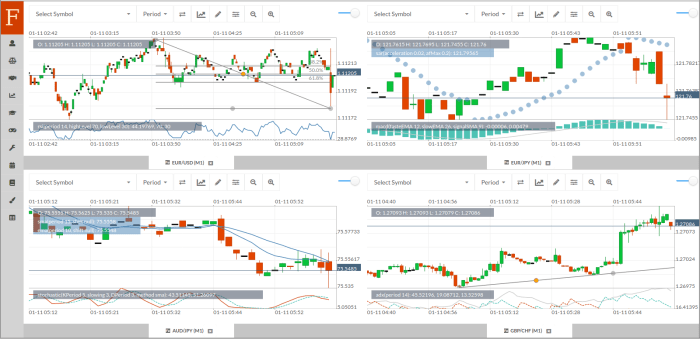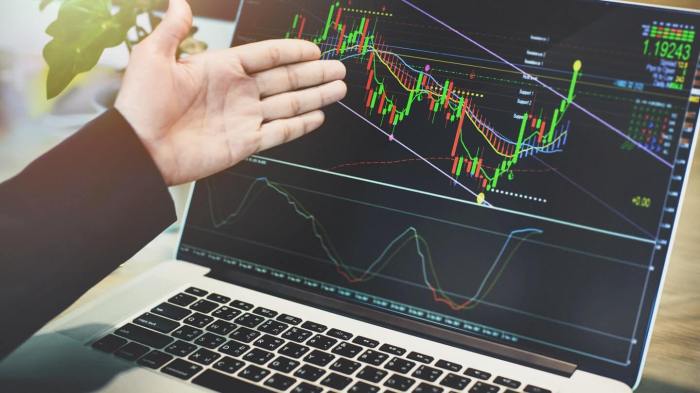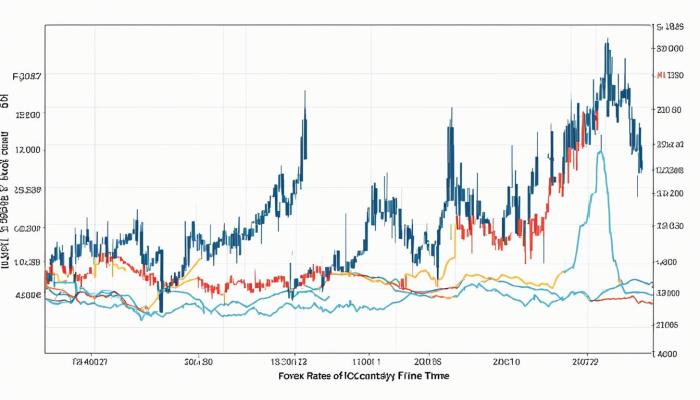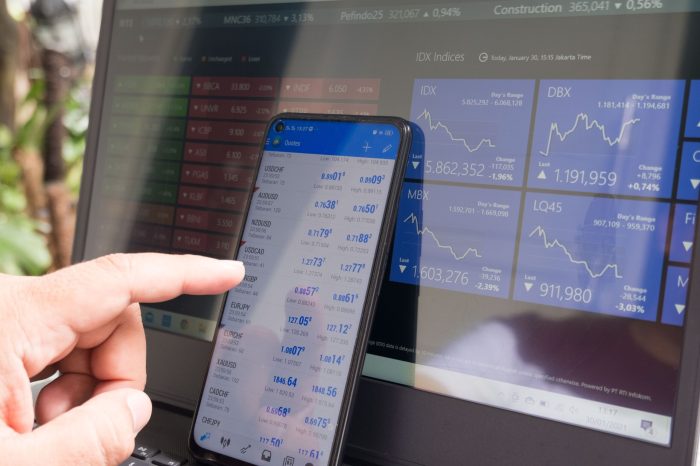Kicking off with Importance of stop-loss orders in forex, this opening paragraph is designed to captivate and engage the readers, setting the tone ahrefs author style that unfolds with each word.
Stop-loss orders are a crucial aspect of forex trading, providing traders with a way to manage risk effectively. By understanding the importance of these orders, traders can protect their investments and navigate the volatile forex markets with confidence.
Importance of Stop-Loss Orders in Forex

In forex trading, stop-loss orders are predefined instructions set by traders to automatically close a trade position when a certain level of loss is reached. This risk management tool is essential for protecting investments and managing potential losses in the volatile forex market.
Understand how the union of Best forex trading platforms 2025 can improve efficiency and productivity.
Definition and Significance of Stop-Loss Orders
Stop-loss orders play a crucial role in forex trading by helping traders limit their potential losses and protect their capital. By setting a stop-loss order, traders establish a predetermined exit point for a trade, ensuring that they do not incur excessive losses beyond a certain point.
Without stop-loss orders, traders risk experiencing significant losses in the event of adverse market movements. For example, if a trader fails to set a stop-loss order and the market suddenly moves against their position, they may end up losing a substantial amount of their investment capital.
Preventing Significant Losses with Stop-Loss Orders
- Stop-loss orders can prevent traders from experiencing catastrophic losses by automatically closing out a trade when the market moves in an unfavorable direction.
- For instance, if a trader sets a stop-loss order at 2% below their entry price, the trade will be automatically closed if the market moves against them by that amount, limiting their loss to 2% of their investment.
- This mechanism helps traders avoid emotional decision-making during times of market uncertainty and ensures that they adhere to their risk management strategy.
Psychological Impact of Using Stop-Loss Orders
Implementing stop-loss orders can also have a positive psychological impact on traders. By having a predetermined exit point for each trade, traders can reduce anxiety and emotional stress associated with trading decisions.
Types of Stop-Loss Orders: Importance Of Stop-loss Orders In Forex
In the forex market, traders can utilize different types of stop-loss orders to manage risk and protect their investments. Each type of stop-loss order has its own advantages and disadvantages, making them suitable for different market conditions and trading strategies.
Market Stop-Loss Order
A market stop-loss order is executed at the best available price once the specified price level is reached. This type of order guarantees execution but may result in slippage during highly volatile market conditions. Market stop-loss orders are commonly used in fast-moving markets where immediate execution is crucial.
Limit Stop-Loss Order
A limit stop-loss order is set at a specific price level, and the trade will be closed at that price or better. This type of order offers price protection but may not guarantee execution if the market moves rapidly against the trade. Limit stop-loss orders are ideal for traders who want to exit their positions at a predetermined price.
Trailing Stop-Loss Order
A trailing stop-loss order is dynamic and adjusts automatically as the market price moves in favor of the trade. This type of order locks in profits while allowing for potential upside if the market continues to move in the trader’s favor. Trailing stop-loss orders are effective in trending markets where prices are expected to continue in a specific direction.
Overall, market stop-loss orders are suitable for fast-moving markets, limit stop-loss orders offer price protection, and trailing stop-loss orders help maximize profits in trending markets. Traders should consider their trading strategy, risk tolerance, and market conditions when choosing the appropriate type of stop-loss order to use.
Setting Stop-Loss Levels

When it comes to setting stop-loss levels in forex trading, there are several important factors to consider in order to protect your capital and manage risk effectively.
Support and resistance levels play a crucial role in determining where to place your stop-loss. These levels indicate areas where the price is likely to encounter barriers and potentially reverse its direction. By setting your stop-loss just beyond these levels, you can avoid getting stopped out by minor price fluctuations while still protecting your investment.
Volatility is another key consideration when setting stop-loss levels. Highly volatile markets may require wider stop-loss orders to account for larger price swings, while less volatile markets may allow for tighter stop-loss levels. It’s important to adjust your stop-loss distance based on the current market conditions to reflect the level of risk involved.
Calculating the ideal distance for a stop-loss order involves a combination of risk tolerance and market conditions. One common method is the percentage risk method, where you determine the percentage of your trading capital you are willing to risk on a single trade. By multiplying this percentage by the distance between your entry point and stop-loss level, you can calculate the ideal stop-loss distance for each trade.
As the trade progresses, it’s essential to monitor the market closely and be prepared to adjust your stop-loss levels accordingly. This may involve moving your stop-loss to break-even once the trade has moved in your favor or trailing your stop-loss to lock in profits as the price continues to move in the desired direction.
When setting stop-loss levels, there are common mistakes to avoid, such as placing your stop-loss too close to your entry point, which can result in getting stopped out prematurely, or setting your stop-loss too far away, which exposes you to unnecessary risk. It’s important to strike a balance between protecting your capital and giving your trade enough room to breathe.
Factors to Consider When Setting Stop-Loss Levels
- Consider support and resistance levels to avoid getting stopped out by minor price fluctuations.
- Take into account market volatility when determining the width of your stop-loss orders.
- Calculate the ideal stop-loss distance based on your risk tolerance and market conditions using the percentage risk method.
Tips for Adjusting Stop-Loss Levels
- Monitor the market closely and be prepared to move your stop-loss to break-even or trail your stop-loss to lock in profits.
Common Mistakes to Avoid
- Avoid setting stop-loss levels too close to your entry point or too far away, striking a balance between risk and protection of capital.
Strategies for Using Stop-Loss Orders
When it comes to forex trading, implementing effective strategies for using stop-loss orders is crucial for managing risk and maximizing profits. Here, we will explore some popular forex trading strategies that incorporate stop-loss orders, how to combine them with other risk management techniques, and advanced strategies for trailing stop-loss orders in trending markets.
Trend Following Strategies with Stop-Loss Orders
One popular strategy in forex trading is trend following, where traders aim to profit from the continuation of an established trend. By using stop-loss orders, traders can protect their positions in case the market reverses against the trend. This strategy involves setting stop-loss levels below or above key support or resistance levels to ensure that losses are limited if the trend reverses.
Breakout Strategies and Stop-Loss Orders
Breakout strategies involve entering trades when price breaks out of a specific range or pattern. Stop-loss orders are essential in breakout trading to manage risk and protect capital. Traders can set stop-loss levels below the breakout point to minimize losses if the breakout fails and the price retraces.
Combining Stop-Loss Orders with Risk Management Techniques, Importance of stop-loss orders in forex
To enhance risk management, traders can combine stop-loss orders with position sizing and diversification. Position sizing helps determine the appropriate amount of capital to risk on each trade, while diversification reduces the impact of a single trade on the overall portfolio. By integrating these techniques with stop-loss orders, traders can better control risk exposure.
Advanced Strategies for Trailing Stop-Loss Orders
Trailing stop-loss orders are dynamic risk management tools that adjust the stop-loss level as the trade moves in the trader’s favor. This allows traders to lock in profits while giving the trade room to continue running in a trending market. Advanced traders often use trailing stop-loss orders to maximize profits in strong trends and protect gains during market corrections.
Successful Trades with Stop-Loss Orders
In successful trades, stop-loss orders have played a crucial role in protecting capital and maximizing profits. For example, a trader using a trend-following strategy with a well-placed stop-loss order could capture a significant portion of a long-term trend while minimizing losses if the trend reverses. By sticking to their trading plan and effectively implementing stop-loss orders, traders can achieve consistent profitability in the forex market.
In conclusion, stop-loss orders are essential tools for any forex trader looking to safeguard their capital and minimize potential losses. By incorporating these orders into their trading strategies, individuals can trade with discipline and control, ultimately increasing their chances of success in the forex market.



























